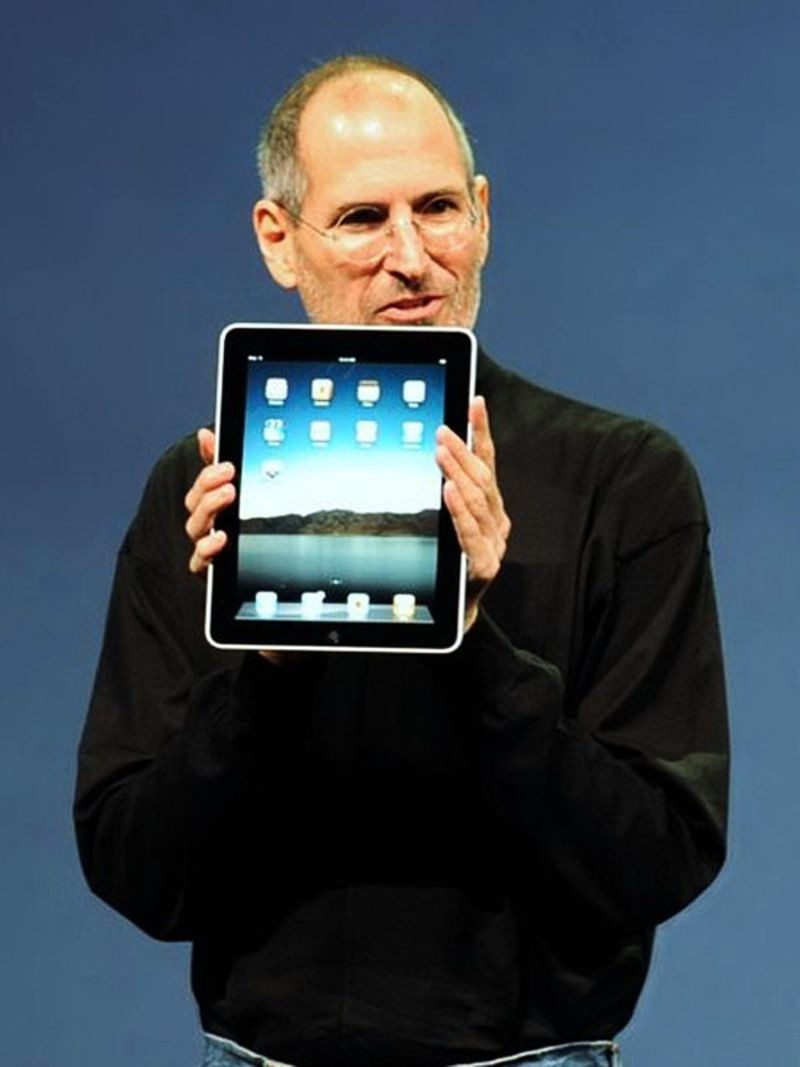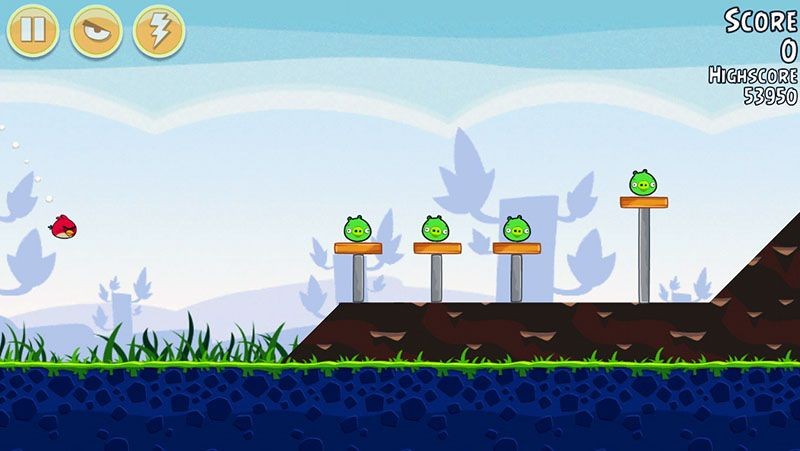
Angry Birds screenshot
Angry Birds becomes top-selling mobile game
As touchscreen-enabled tablets and smartphones proliferate, mobile games became top-sellers. In Angry Birds, players slingshot wingless birds of various kinds towards towers inhabited by green pigs in an effort to knock them to the ground. Selling for just 99 cents from an online store, Angry Birds and its sequels have had more than two billion downloads.

Introduction of the iPhone 4 with retina display
Apple Retina Display
Since the release of the Macintosh in 1984, Apple has placed emphasis on high-resolution graphics and display technologies. In 2012, Apple introduced the Retina display for the MacBook Pro laptop and iPad tablet. With a screen resolution of up to 400 pixels-per-inch (PPI), Retina displays approached the limit of pixel visibility to the human eye. The display also used In Plane Switching (IPS) technology, which allowed for a wider viewing angle and improved color accuracy. The Retina display became standard on most of the iPad, iPhone, MacBook, and Apple Watch product lines.
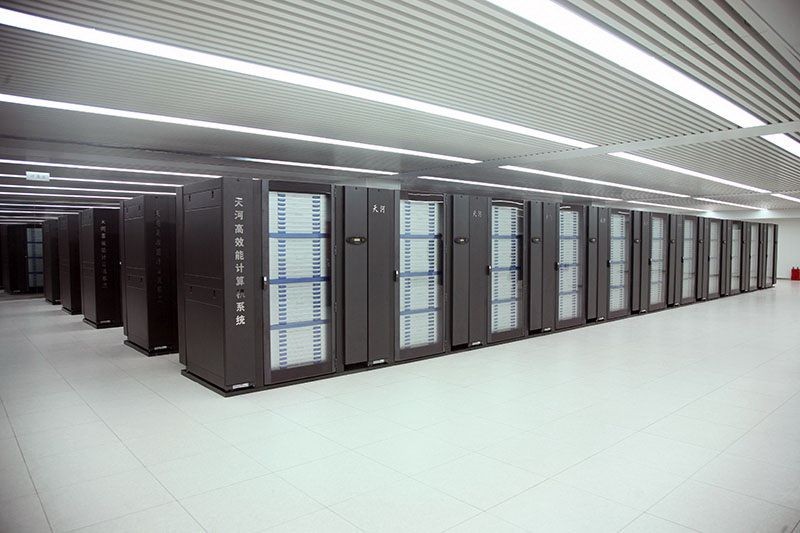
Tianhe-1A Supercomputer
China’s Tianhe supercomputers are operational
With a peak speed of over a petaflop (one thousand trillion calculations per second), the Tianhe 1 (translation: Milky Way 1) is developed by the Chinese National University of Defense Technology using Intel Xeon processors combined with AMD graphic processing units (GPUs). The upgraded and faster Tianhe-1A used Intel Xeon CPUs as well, but switched to nVidia’s Tesla GPUs and added more than 2,000 Fei-Tang (SPARC-based) processors. The machines were used by the Chinese Academy of Sciences to run massive solar energy simulations, as well as some of the most complex molecular studies ever undertaken.

From Darkness, Light by Emily Howell
First Emily Howell album released
In the 1980s, David Cope, a music professor at University of California, Santa Cruz, begins to to develop a music composition program called Emily Howell. Based on his earlier Experiments in Musical Intelligence (EMI), Emily Howell was designed to incorporate feedback from listeners to influence its compositions. Emily Howell’s first album, From Darkness, Light, featured works composed by the program and played by Cope and Erika Arul, though many in the music community still consider Cope the composer for having created the program.
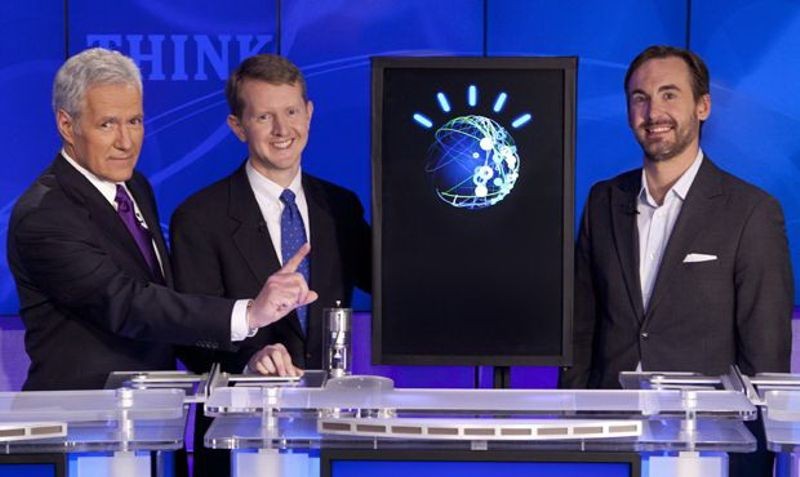
(L to R) Alex Trebek, Ken Jennings, IBM’s Watson, and Brad Rutter on Jeopardy!
IBM’s Watson defeats Jeopardy! contestants
In 2010, IBM’s Watson spars against former Jeopardy! Tournament of Champion contestants and finishes with a 71% winning percentage. This was preparation for a 2011 matchup where Watson would defeat two former human Jeopardy! champions. In the televised exhibition match, Watson handily defeated two of the all-time best Jeopardy! players, Ken Jennings and Brad Rutter, by analyzing natural language questions and content more accurately and faster than its human counterparts.
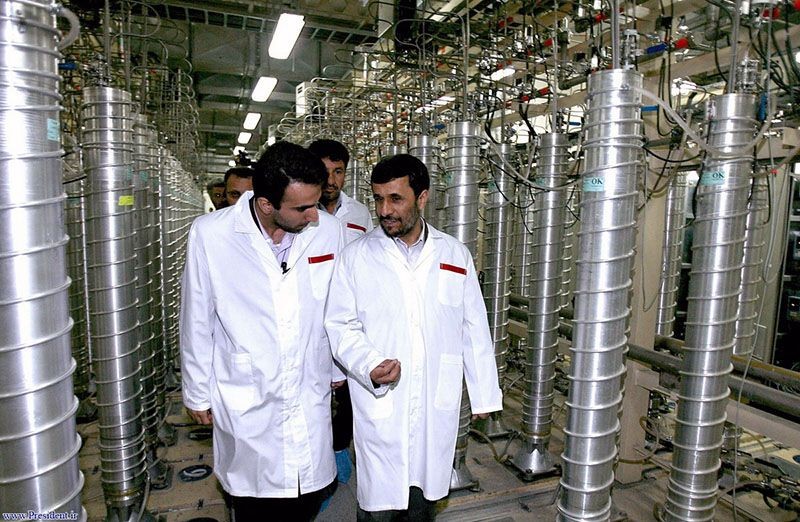
Natanz uranium enrichment facility, Iran
Reports of the Stuxnet virus surface
The Stuxnet virus is widely reported in the media due to attacks centered in Iran. The virus attempted to damage uranium enrichment centrifuges used in Iran’s nuclear development program by causing damaging speed variations. Although it was recognized that some centrifuges were rendered inoperable by the virus, the full extent of the damage remained unknown. Stuxnet brought attention to the fragile nature of global infrastructure in a networked world.
The Apple iPad is released
The iPad combines many of the popular capabilities of the iPhone, such as built-in high-definition camera, access to the iTunes Store, and audio-video capabilities, but with a nine-inch screen and without the phone. Apps, games, and accessories helped spur the popularity of the iPad and led to its adoption in thousands of different applications from movie making, creating art, making music, inventory control and point-of-sale systems, to name but a few.
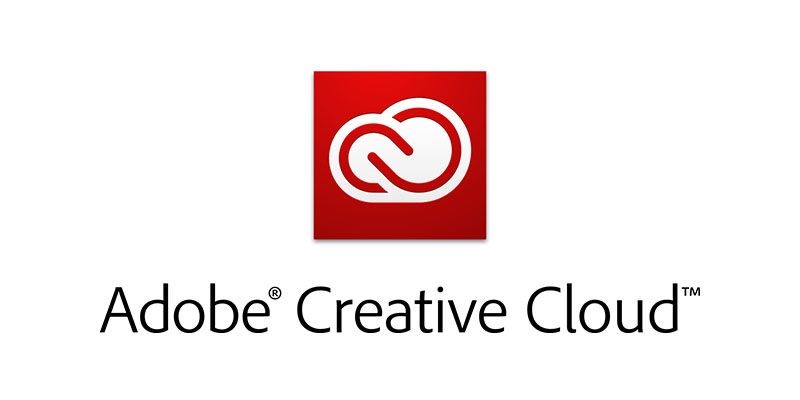
Creative Cloud logo
Adobe Creative Cloud is Announced
Adobe Creative Cloud is announced as a subscription and cloud-based model of distribution for its major software products. Adobe Acrobat, Illustrator, Dreamweaver, Photoshop, and others, could be subscribed to either as a complete package or individually to suit user needs. This model also allowed Adobe to begin releasing continuous updates to their products, shortening the development cycle and the time need to incorporate new features.

Tunis protest, January 14, 2011
Arab Spring protests spread by social media
Starting in late 2010 and continuing through 2011, protests in North Africa and the Middle East lead to regime change, and in some cases, free elections for the first time in history. Many of these protests were organized or promoted on sites such as Twitter and Facebook, and commentary appearing on popular blogs helped get the news out to the rest of the world while official, government-run media outlets were often silent.
IBM Sequoia is delivered to Lawrence Livermore Labs
Built by IBM using their Blue Gene/Q supercomputer architecture, the Sequoia system is the world’s fastest supercomputer in 2012. Despite using 98,304 PowerPC chips, Sequoia’s relatively low power usage made it unusually efficient. Scientific and defense applications included studies of human electrophysiology, nuclear weapon simulation, human genome mapping, and global climate change.
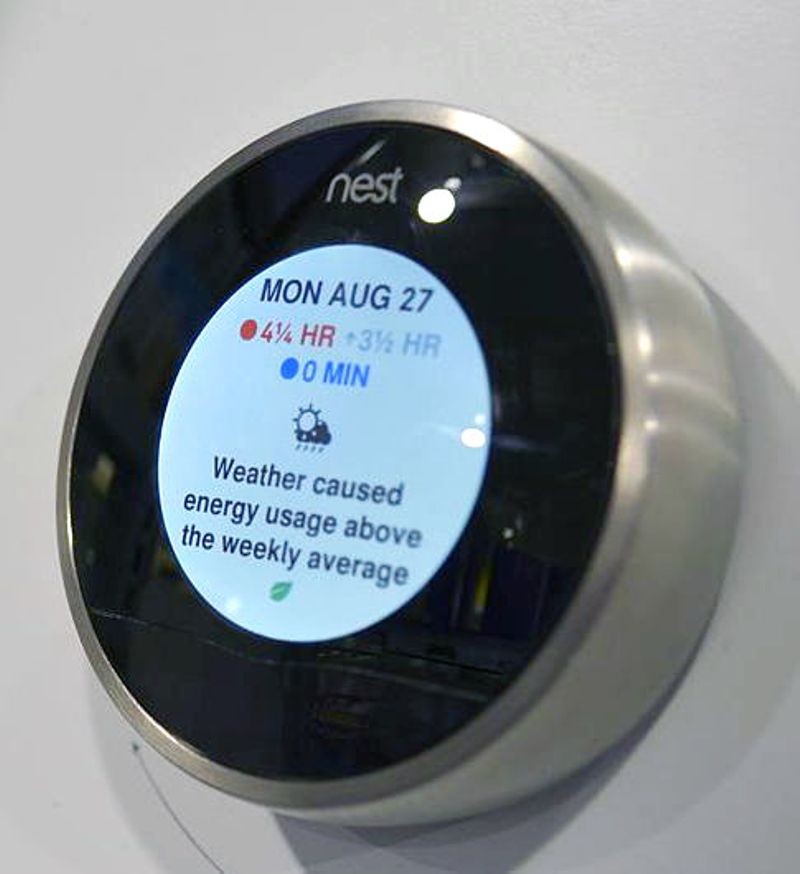
Nest Learning Thermostat
Nest Learning Thermostat is Introduced
The Nest Learning Thermostat is an early product made for the emerging “Internet of Things,” which envisages a world in which common everyday devices have network connectivity and can exchange information or be controlled. The Nest allowed for remote access to a user’s home’s thermostat by using a smartphone or tablet and could also send monthly power consumption reports to help save on energy bills. The Nest would remember what temperature users preferred by ‘training’ itself to monitor daily use patterns for a few days then adopting that pattern as its new way of controlling home temperature.
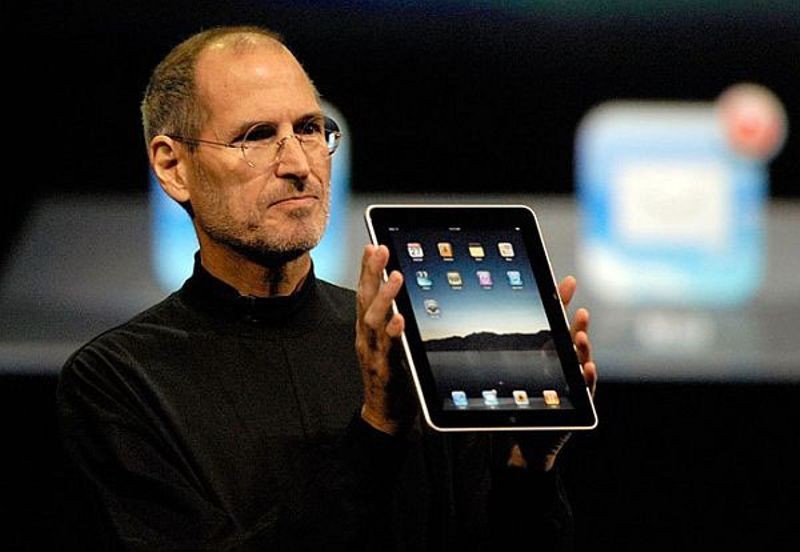
Steve Jobs at introduction of the iPad in 2010
Passing of Steve Jobs
Few individuals are as closely tied to the image of their company as co-founder Steve Jobs is to Apple. His vision imbued products during both his tenures at the company. His passing on October 11th, 2011, was met with widespread sadness. Many individuals left flowers and other tributes at Apple stores around the world, and social networks were filled with remembrances from friends and admirers. As many noted at the time, Jobs had transformed six different industries: music, animated movies, personal computers, telephones, tablet computing and digital publishing.

Siri interface
Siri is Announced
Siri is introduced as a built-in feature with the Apple iPhone 4S smartphone in October. A voice-activated personal assistant, Siri could “understand” natural language requests and also adjust the information it retrieved from the web by learning user tendencies and preferences. Siri could perform a wide number of functions – from recommending local restaurants (using the web and the iPhone’s built-in GPS navigation system), providing walking or driving directions, giving weather forecasts, showing current sports scores, and even answering seemingly meaningless questions like, “Who is your favorite NCAA college football team?” Although the program’s “voice” was female by default, it could be changed to a man’s voice.

Instagram logo
Facebook Acquires Instagram
Instagram, an image-sharing and social networking application, is purchased by Facebook for nearly $1 billion. It was initially launched in October 2010 by founders Kevin Systrom and Mike Krieger and became an instant hit, with over 100 million active users by early 2013. Photos and videos (with 15 second maximum length) could be shared among users, who could then annotate these images with specific hash tags to enable them to be easily shared among other social media platforms such as Twitter and Facebook. Instagram also allowed users to manipulate their photos with a variety of digital filters such as “Slumber,” “Kelvin,” “1977,” “Sierra,” and “Inkwell.”

Raspberry Pi computer
Raspberry Pi, a credit-card-size single board computer, is released as a tool to promote science education
Conceived in the UK by the Raspberry Pi Foundation, this credit card-sized computer features ease of use and simplicity making it highly popular with students and hobbyists. In October 2013, the one millionth Raspberry Pi was shipped. Only one month later, another one million Raspberry Pis were delivered. The Pi weighed only 45 grams and initially sold for only $25-$35 U.S. Dollars.

Edward Snowden, circa 2014
Edward Snowden
Former CIA employee and NSA contractor Edward Snowden copied hundreds of thousands of documents from his workplace covering dozens of confidential US national security programs. Snowden worked with journalists in the US and UK to bring the programs to light. Among the programs Snowden’s revelations exposed was PRISM, where the NSA collected data with the assistance of companies such as Microsoft, Facebook, and Google.

Xbox One gaming console
Microsoft introduces Xbox One
Microsoft had not released a new version of the Xbox for almost eight years when it introduces the Xbox One. The Kinect movement-based user interface, and streaming entertainment options such as Xbox Music and Xbox Video, were a significant part of the new system. Games were offered via Blu-ray discs, or by download from Microsoft’s Xbox Live service, though unlike most consoles, it offered no backward compatibility for earlier Xbox games.

PlayStation 4 game console
Sony releases PlayStation 4
The PlayStation 4 (PS4) is seen as a bold new step for Sony in the game market. Sony chose AMD’s x86-64 Accelerated Processing Unit to serve as both central processing unit and graphics processing unit, built together onto on a single chip. Interactivity was at the forefront of the design for the PS4, including PlayStation Now, a cloud-based gaming service that could stream video from the internet, and a controller featuring a share button, allowing players to view each others’ game play.
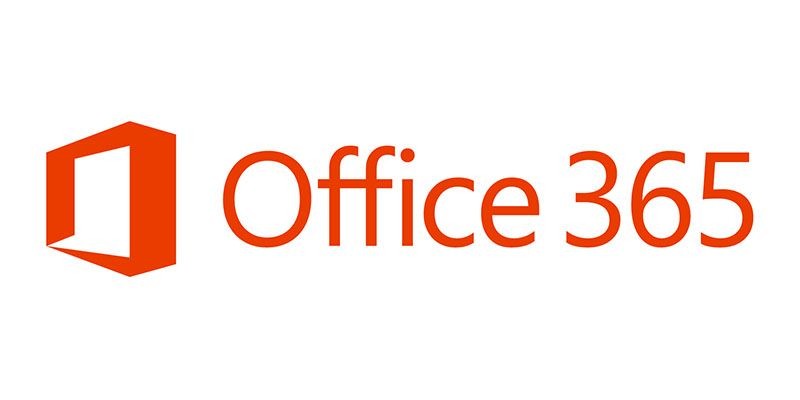
Microsoft Office 365 logo
The Stable Release of Microsoft Office 365 is Unveiled
An updated Microsoft Office 365 is announced. It was a subscription-based software product. Microsoft’s Word, Excel, OneNote, PowerPoint, Outlook, Access, and Publisher were all available in packages for a monthly or annual subscription. Also included with a subscription was 1 TB of cloud storage on Microsoft’s One Drive (formerly Skydrive). Home, personal, university, business, and enterprise subscription plans were made available for a wide range of users. Microsoft’s change to a subscription model was not unique: Apple, Adobe, IBM and many other large software and technology companies adopted this model as well.
![]()
The cast of Silicon Valley
Silicon Valley TV series
As technology has become a greater part of everyday life, film and television producers have begun to create content focusing on tech workers and start-up business culture. Cable network HBO launched Silicon Valley, a series that details the lives of a group of friends living in a startup incubator as they develop a music app called Pied Piper while competing with a multinational corporation called Hooli. The series received wide acclaim from critics, and has been broadcast in several other countries.

Apple Pay on the iPhone and Apple Watch
Apple Pay is Released
The Apple Pay mobile payment system is introduced into Apple’s product ecosystem. Initially only available for the iPhone 6 and 6 Plus, iWatch, iPad Air 2, and iPad Mini 3, many major banks and credit card companies participated in the Apple Pay system. The device’s near field communications (NFC) interface, Passbook app, and Apple’s Touch ID system worked in tandem with point-of-sale systems in retail outlets to complete transactions. Apple Pay could also be used for online purchases.

Zoe Quinn, 2014
Gamergate
In August of 2014, Eron Gjoni creates a blog post dealing with his break-up with game designer Zoe Quinn. The post accused Quinn of inappropriate relations with a game journalist, setting off a major controversy on sites such as 4Chan and Twitter. Several prominent women in gaming, such as academic Anita Sarkeesian and designer Brianna Wu, began receiving death threats on social media, while others experienced various forms of abuse, including releasing personal information online, or “doxxing.” The two sides of the controversy were divided as to the focus of Gamergate; some saw it as a misogynistic response to increased participation of women in gaming, while others believe that it is actually about ethics in game journalism.
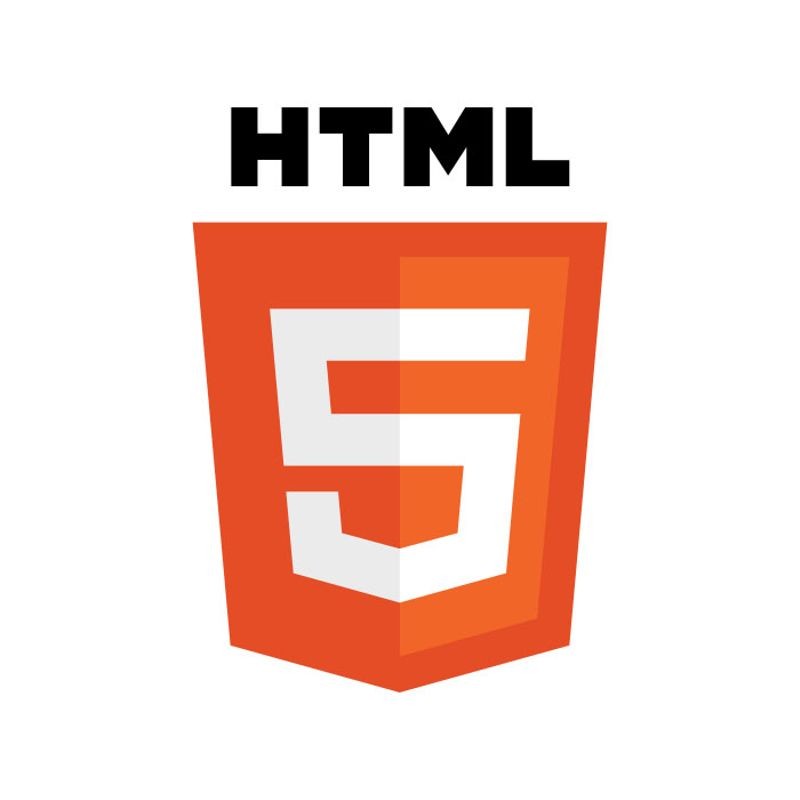
HTML 5 logo
HTML 5 is Announced
HTML 5 is announced as the successor to HTML 4, which had become the standard for web markup languages in 1997. Markup languages describe how web pages will look and function. Work on HTML 5 had begun in 2004 under the auspices of the Web Hypertext Application Technology Working Group. It was simplified compared to its predecessors and was intended to be human-readable. HLTML 5 also offered a number of improvements for multimedia, such as simplifying the embedding of content such as streaming video and games into web pages.
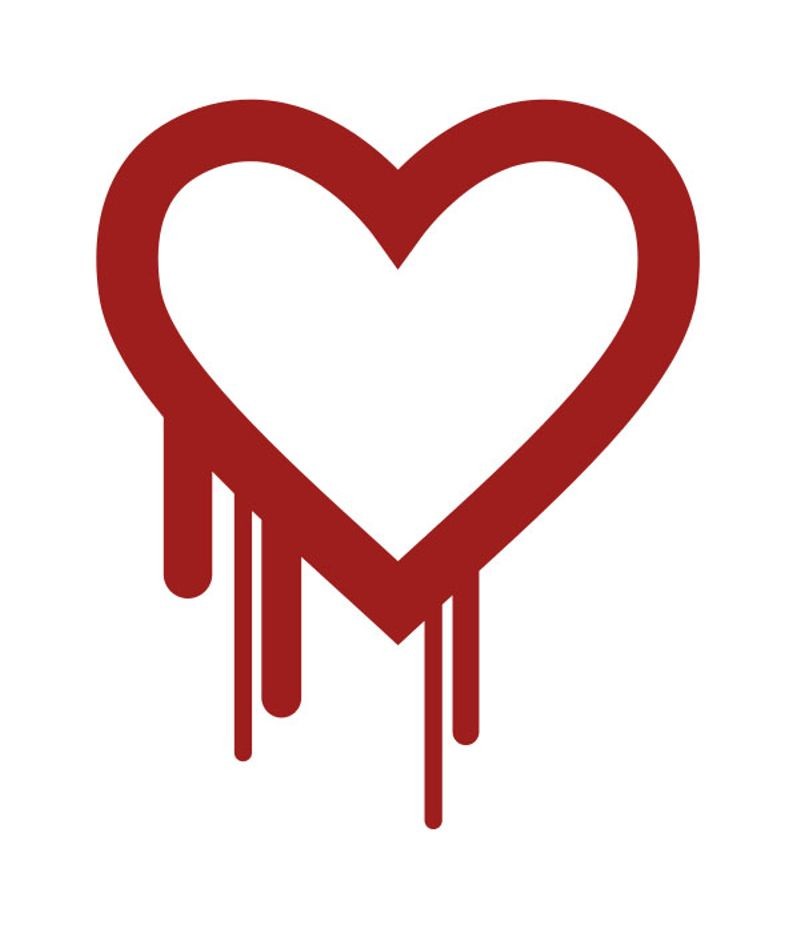
Heartbleed Bug logo
Heartbleed Bug Discovered
The Heartbleed bug is uncovered as a dangerous security flaw in the code base of the OpenSSL cryptographic software library. OpenSSL protected a significant portion of the world’s web servers, and nearly 20% of them were found to be vulnerable to attack from this particular security bug, which allowed hackers to eavesdrop on the communications of unsuspecting victims and steal sensitive information such as user names and passwords, emails, instant messages, and even confidential files and documents. Although it was a dangerous and widespread bug, installation of the “Fixed OpenSSL” library by service providers and users greatly reduced its effectiveness.

Poster for the offending film, 2014
Sony Hack
In December 2014, media conglomerate Sony suffers one of the largest hacks in corporate history, with hackers claiming to have accessed more than a hundred terabytes of confidential information. Referring to themselves as the Guardians of Peace, hackers also accessed emails from top executives, possibly as a form of retaliation for the pending release of the anti-North Korean comedy The Interview. While most believe the Guardians of Peace are affiliated with the North Korean government, some believe disgruntled former Sony employees are to blame. In March 2015 thousands of the Sony emails were released on the site Wikileaks.
University of Michigan Micro Mote is Completed
The University of Michigan Micro Mote (M3) is the smallest computer in the world at the time of its completion. Three types of the M3 were available – two types that measured either temperature or pressure and one that could take images. The motes were powered by a tiny battery and could gain light energy through a photocell, which was enough to feed the infinitesimally small amount of energy a mote consumes (1 picowatt). Motes are also known as “smart dust,” since the intention is that their tiny size and low cost make them inexpensive enough to “sprinkle” in the real world to as sensors. An ecologist, for example, could sprinkle thousands of motes from the air onto a field and measure soil and air temperature, moisture, and sunlight, giving them accurate real-time data about the environment.

Apple Store’s display of newly introduced Apple Watches
Apple Watch
Building a computer into the watch form factor has been attempted many times but the release of the Apple Watch leads to a new level of excitement. Incorporating a version of Apple’s iOS operating system, as well as sensors for environmental and health monitoring, the Apple Watch was designed to be incorporated into the Apple environment with compatibility with iPhones and Mac Books. Almost a million units were ordered on the day of release. The Watch was received with great enthusiasm, but critics took issue with the somewhat limited battery life and high price.

Net neutrality protest sign
FCC issues Net Neutrality decision
Net neutrality, the treatment of all data sent across the internet as equal regardless of user, content, or platform, is one of the founding principles of the internet. Many Internet service providers (ISPs) and other technology companies opposed the idea by claiming it would discourage investment in infrastructure, while consumer advocates and civil rights organizations asserted that net neutrality protects freedom of speech and ensures the widest possible Internet access. The Federal Communications Commission ruled that broadband Internet access was included under the Communications Act of 1934, and therefore ISPs were required to follow FCC guidelines that include net neutrality as a principle.
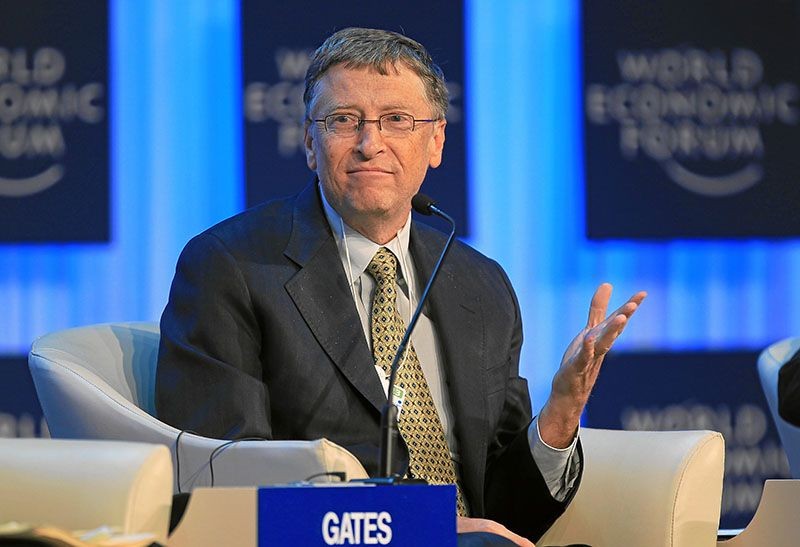
Bill Gates
Gates Joins Musk, Hawking in Expressing Fear of AI
Microsoft co-founder Bill Gates joins a number of prominent tech gurus and scientists in revealing his thoughts on the potentially dangerous effects and unintended consequences of artificial intelligence on human civilization. Previously, Elon Musk, Stephen Hawking, and others had expressed similar sentiments. Those on the other side of the debate felt artificial intelligence would usher in an era of unprecedented human achievement, aided by the “minds” of humanity’s artificial brethren. While Gates and others felt that in the short-term intelligent machines would benefit mankind, they foresaw a future where more advanced super-intelligent machines could pose a grave threat to human existence.
4 Cutting-Edge Technology Trends in 2024
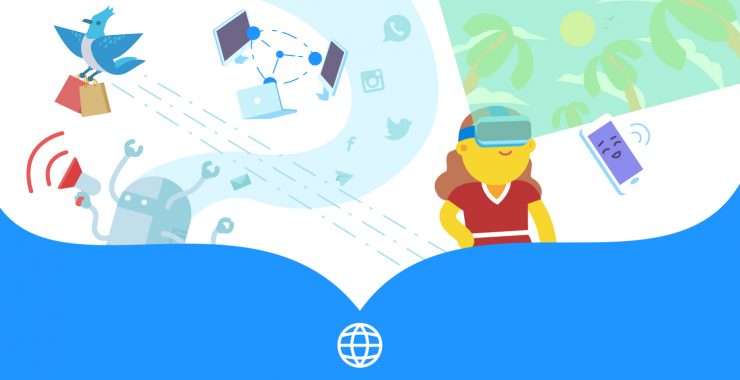
The ongoing development of technology directly influences everything we do and transforms every sphere of our lives. Some tried-and-true trends are out, other old-timers are broadening the horizons of their impact, and innovations make our lives better.
We expect so many cutting-edge technology trends in the coming year that it’s just impossible to list them all. I offer you to look at the most promising innovations. What will impact the human-machine interaction? Let’s make predictions based on the analyzed data.
Most influential cutting-edge technology trends:
1. Internet of Things
Hi-tech integrated into everyday life, from the exclusive wealth of science into a daily routine. The Internet of Things (IoT) is no exception. The IoT refers to billions of physical devices around the world that are now connected to the internet, collecting and sharing data. In other words, the web is now a platform for devices to interact remotely.
The IoT devices allow us to protect the environment, save energy, improve agricultural productivity, make transportation faster and safer, and improve public safety. In short, they simplify routine tasks.
However, with the development of cutting-edge technologies, businesses began to actively use the IoT too. Almost two-thirds of companies believe the IoT is important to their current business, and over 90% believe the IoT will be important to the future of their business. Let’s take a look at some IoT trends in business for the coming year:
- Growing popularity of voice services (Siri, Cortana). Some companies strive to develop it. Too many of these technologies still can’t go beyond single-threaded conversations and into multi-threaded conversations with even basic context. Meanwhile, the complexity and quality of voice services will be improved significantly. Enterprises that leave voice services without attention, may become the outsiders of the market.
- Competition among IoT platforms increases. According to North America:” The IoT opportunity has attracted numerous duplicative and overlapping wireless solutions such as Bluetooth, Wi-Fi, 5G, NB-IoT, LoRa, and Sigfox. Standards consolidation lies ahead, but confusion and fragmentation will dominate in the near term. Enterprises use the location of data as a competitive advantage — and as a result, a hybrid approach to cloud and data center management is taking hold. More and more companies will employ both on-premises data centers and off-premises cloud services to manage their IT infrastructure”.
- IoT networks are publicly available. Low implementation costs, rapid prototyping, and global coverage help to quickly spread the public IoT platforms.
- Blockchain-based IoT adoption rises to 5%. The blockchain is not yet ready for large-scale deployments requiring reliability, stability, and seamless integration with existing technology infrastructure. This cutting-edge technology is transparent, permanent, and shared. All three key aspects are very important to companies such as FedEx. Ever since the company joined the Blockchain in Transport Alliance, things have moved along swiftly. The main goal is to create blockchain standards for the tech and transportation industry as a whole. Moreover, educational efforts for the freight industry are underway as well.
2. Artificial intelligence (AI)
For most people, artificial intelligence (AI) may seem like something from science fiction. To your surprise, we deal with AI every day. We use applications of аrtificial intelligence in a variety of industries. What will AI bring to us?
- More customized user experience. Businesses and brands use AI to customize the user experience while analyzing data and browsing history. There will no longer be a need to ask for a name, email and contact information. This info will soon be available through the use of AI.
- Revolution in engineering modeling and design. Deep learning of technologies can lead to a revolution in engineering modeling and design. Now, with the help of AI and ML models, which can recognize and act on different data with types of labeling such as semantic segmentation, every aspect of engineering can grow and be automated. “Over the next 3-5 years, the development of products may speed up. We will receive an absolutely new paradigm of high-speed innovations in the production of products, their quality, and cost.” – Mark Edgar, senior information scientist, GE Research.
- AI-chatbots. According to Darmesh Shah, co-founder of HubSpot, more and more companies are moving toward AI chatbots and other virtual assistants to solve the daily task flow. Bots allow companies to provide answers to the most common client questions. Natural language processing and machine learning will gradually become available even to small organizations. Developers will focus on improving the susceptibility of bots, which would allow the bots to carry out more tasks. Using chatbots for providing 24/7 customer support, big or small businesses can also include these data into their CRM to gather more valuable customer insights.
- Influence on social media. The great impact of AI can involve social media. We will see an increase in personalized content in real-time. It can create expanded sales possibilities, mainly because AI uses effective behavioral targeting methodologies.
- Increase of digital B2C, B2B commerce and online marketing. With the new Google Assistant, online shopping has become more convenient. It would be easier to tell your AI assistant to order something at your place. This means that companies will need to invest in optimizing their online product to compete with e-commerce competitors.
- Robotics. We can assume that in the future robots will be trained in new programs in virtual reality. The company of Elon Musk, which deals with artificial intelligence, has already implemented an algorithm for training robots.
3. Augmented and virtual reality
Virtual and augmented reality (VR and AR) are among the top tech trends. We used to think of VR as the entertainment. Only video games and movies with virtual reality come to mind. However, we also use VR and AR in the following fields:
- Medicine. The Dutch company VisitU using VR helps the children who are in the hospital to keep in touch with their parents. And MindMotionPro helps to restore movement skills after a stroke. In the future, it will be possible to diagnose patients at a distance.
- Cinema and video. A video with a 360° view amazes everyone, who deals with it for the first time. А viewer completely dives into the video sequence and gets an unforgettable impression, as if the spectator participates in the cinema.
- Shopping online. Now, this trend is an idea come true for every buyer. With virtual reality stores, people will be able to walk around the hall, choose goods, and try on clothes without going out. It is possible that virtual shops will partially replace real ones.
- Education. A great advantage in education is the possibility to visually show examples from geography, biology, and history with the help of virtual reality. If people have such visual information, they will study more effectively. One of the most exciting aspects of VR is its ability to unite people regardless of their location. All of the experiences, tutorial videos, and learning apps would work just as well whether the teacher and student are in the same room.
- Models and objects. Virtual reality allows testing products without creating a physical model, changing its parameters and properties on the fly. It may speed up the technical progress and significantly help to save on resources.
- Social networks. In the future, we will have the opportunity to meet friends in Paris, on the slopes of the Alps, or in space with the help of a full-fledged virtual world.
4. WebRTC
WebRTC (Web Real-Time Communication) is an open standard for multimedia communication in real-time, which works directly in a web browser without installing additional programs or extensions.
WebRTC is supported in Google Chrome, Mozilla Firefox, and Opera. It serves to reduce the risks for privacy when the local servers and multimedia streams are available. Moreover, WebRTC allows businesses to improve the quality of online meetings, video conferencing, and similar services.
In the past, high-quality video conferencing with video systems and mobile users used to require help from your IT team or required you to have technical knowledge. With WebRTC (joining from your browser), it gives mobile users an easier experience without sacrificing quality video and it “just works”.
According to an ABI Research analyst, major trends will start to form within the enterprise market with WebRTC. Businesses will implement the new technology to aid productivity, reduce communication barriers, and improve team communication within the workplace.
Innovations and new cutting-edge technologies in 2024
The way people live and work is changing at a breakneck speed. Clearly, the year will bring innovations in the cutting-edge technologies. A cloud network will only expand and technologies like AI, WebRTC, IoT, VR, and AR will progress in development and use as well. They are already used in various fields (medicine, business, education, social media, cinema).
In my opinion, the most promising of these technologies is IoT. This trend will help businesses dive deeper into customer relationships, expand operational excellence, and create competitive advantage in their industries.
At the same time, VR and AR will have a significant impact on a wide variety of industries. Both technologies are able to change the way enterprises handle business, increase internal productivity, and reduce overall expenses.
What breakthrough would you like to use in your own business? Don’t forget to share your thoughts in the comments below!
BACK
WHAT’S NEXT?
< START OVER?

